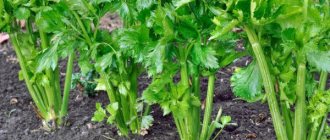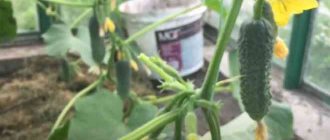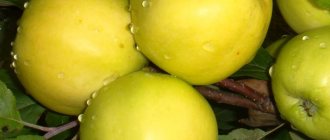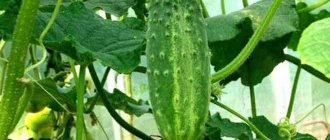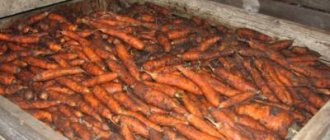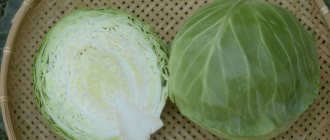A root vegetable from the Umbelliferae family, root celery has been known in Russia since the 18th century. The plant with a large rounded root and dense white pulp was initially grown only as an ornamental and medicinal plant.
Later, cooks began to widely use the Mediterranean vegetable for cooking. Over time, it has become a common garden crop, although it is grown less frequently than stalk or leaf celery.
Varieties and description
The state register of agricultural achievements includes just over three dozen varieties of root celery for open ground. Of these, the most popular.
Albin
A high-yielding variety bred by Czech breeders. What does this variety look like? The pulp of the fruit, reaching 12-13 cm in diameter, is white, dense, without voids. The skin is thin, the upper part of the fruit has a greenish tint. The root crop protrudes more than half above the ground. A few lateral roots are formed only in the lower part. The greens are tall - up to 40 cm, suitable for consumption. The average ripening period is 160 days after germination .
We invite you to watch a video about Albin celery:
Anita
Industrial grade. The weight of the oval fruit is 300-400 g. The pulp is snow-white, dense, juicy, suitable for freezing. The taste is high. The fruit is almost completely immersed in the ground. The skin is thin, light beige. Productivity is high. Mid-late ripening period. The variety does not tolerate drought well, but grows at fairly low temperatures (up to +4 °), and practically does not form shoots. The keeping quality of the root crop is high.
We invite you to watch a video about the Anita celery variety:
Apollo
Mid-late variety of Dutch selection. It has a good presentation. The fruit is soft, round in shape, with a small number of lateral roots. When cooked and frozen, it retains its white color and is easy to cut. Keeping quality is good.
Zinger
An early ripening variety (from germination to commercial maturity 140-160 days), bred by Russian breeders. The rosette is small - about 20 leaves. The variety produces few lateral roots . The weight of the rounded fruit is 150 g. The pulp is snow-white and has a pleasant aroma.
Giant Danish (Danish giant)
Mid-season (160-180 days). Round, yellowish-gray, smooth fruit with white, aromatic pulp, weighing up to 700 g. Productivity is high (3 – 4 kg/m²).
Diamond
Dutch mid-early variety. The period from full germination to commercial ripeness is 150-160 days. The color of the fruit is yellowish-gray, weight 200-300 g. Productivity is good (2.3 - 4.9 kg/m²). Resistant to diseases and bolting. Forms few adventitious roots. A dense planting pattern is not recommended.
Egor
The variety has a medium ripening period (170-180 days). The depth of the round, smooth fruit is average. Weight 250-400 g. The pulp is white with a pronounced bright odor, the variety contains a lot of sugar and essential oils . It has good keeping quality.
Cascade
A mid-early variety with a ripening period of about 150 days. The socket is high. The pulp is snow-white and does not change color during processing and long-term storage. Keeping quality and safety are high.
Prague giant
One of the most famous varieties in the world. The average weight of a turnip-shaped tuber is 500 g. With proper agricultural technology and favorable conditions, up to 1000 g. The variety is mid-early and has time to ripen when planted in open ground with seeds . The white aromatic pulp has a delicate taste. Suitable for drying and canning.
We invite you to watch a video about Prague Giant celery:
Apple
One of the oldest domestic early ripening hybrids. The root crop is round, slightly flattened. The pulp is aromatic, juicy, tender, sugary. The average tuber weight is 150 g . Forms many lateral roots. It is valued for its excellent taste, good shelf life, and resistance to pests and diseases. Despite its small size, up to 5 kg of fruits are collected from 1 m².
Other popular varieties include: Kornevoy Gribovsky, Esaul, President, Russian Size, Strong, Maxim, Yudinka, Delicatessen, Ivan-Tsarevich.
We invite you to watch a video about Apple Celery:
Invictus
An early ripening variety of celery, it ripens completely in 120-140 days. The root crop reaches a weight of up to 600 grams, although it is quite small in size. Tubers with grayish-white skin, light flesh, possible yellow spots.
Side shoots are located at the bottom of the tuber. The tops of the plant are also edible, but picking them before the root crop ripens is not recommended, so as not to harm the tuber; you can cut off the leaves.
The main advantage of the variety is the possibility of cultivation in dry areas. Seedlings should not be planted in the ground too deep.
Recommendations for choosing varieties by region
When choosing a celery variety to plant in your region, pay attention to several factors:
- ripening time;
- intensity of formation of lateral adventitious roots;
- fruit yield;
- resistance to low temperatures, drought, diseases, pests;
- ease of cleaning, presentation, shelf life of presentation and taste.
For cultivation in the Urals and Siberia, early and mid-early varieties and hybrids are chosen (celery with medium and late ripening will not have time to ripen until autumn), among the following varieties:
- Anita.
- Esaul.
- Prague giant.
- Albin.
- Kornev Gribovsky.
- Strongman.
- Egor.
- Maksim.
- Diamond.
- Makar.
- The president.
In the central regions of the middle zone and southern regions, varieties of all ripening periods can be grown. Among the frequently selected best late varieties (including the Moscow region):
- A treasure trove of health.
- Golden feather.
- Cupid.
- Old doctor.
- Yudinka.
- Edward.
Fruits with a small number of lateral roots are easier to harvest, they are more aligned and accumulate more useful substances.
Root celery varieties for Siberia
Root celery is a cold-resistant crop that grows successfully in Siberian conditions. For planting, early and mid-fruiting varieties are chosen. It is best to grow hybrids that do not have lateral roots.
In Siberia, celery root seeds are planted in early February. The first shoots appear after 14 - 20 days. The seedlings are watered and fed with mineral complexes. It is transferred to the beds in May - June, when the frosts have passed. A sunny place with fertile soil is allocated for the culture. Plants do not require hilling; it is enough to water them and apply fertilizer.
For planting in the Siberian regions, the varieties Esaul, Egor, Anita, Prague Giant, Makar, Diamant, and Maxim are chosen. Celery Gribovsky and Yablochny produce too small root crops.
By root size
Gardeners also attach considerable importance to the size of root crops, although varieties with small fruits, as a rule, are distinguished by high taste and good preservation during long-term storage.
The largest-fruited varieties are recognized :
- President - 2-2.5 kg.
- Russian size - 1-2.5 kg.
- Prague giant - 400-1000 g.
- Diamond - 200-1200 g.
- Giant Danish - 500-700 g.
- Moscow giant - 500-700 g.
- Strongman - 400-600 g.
Kornevoy Gribovsky
This variety of celery ripens 120-150 days after the seedlings emerge. A low, up to 45 cm plant with dark green leaves and rounded roots with aromatic pulp.
The advantage of the variety is the minimum of lateral roots. A relatively unpretentious variety that produces a stable harvest. Does not throw out flowering shoots in the first year. It has excellent taste, is eaten fresh, but can also be dried.
Seed preparation and proper processing
Celery root seeds contain a lot of essential oils, so pre-sowing treatment is mandatory for them.
There are several ways to prepare seeds:
- soak the seeds in water at a temperature of 30 °C, place the container with them in a warm place (on the radiator);
- soak the seeds three times for 1 hour in water at a temperature of 60 °C;
- soak the seeds in a solution of one of the drugs - Epin, NV-10, Zircon; instead of growth stimulants, you can use aloe juice;
- disinfect the seeds by dipping them for 2-3 hours in a weak solution of potassium permanganate, wrap them in a damp cloth, place them on a saucer and keep them on the radiator for 2-3 days until “eyes” appear;
- pour the seeds into a linen bag, immerse in hot water at a temperature of 40-45 °C for 20 minutes, and then for the same time in cold water at a temperature of 20-22 °C.
Properly treated seeds germinate in 7-10 days.
The most germinating seeds are those that have lain for 3-4 years.
Benefits “from top to bottom”
Selera is, neither more nor less, a herb, in nature it is biennial, in cultivated form it is annual. Depending on the life form, one or another part of it is used for food: tops, stems or roots. Salads, soups, side dishes are prepared from the stems and roots, and fresh or dried leaves serve as a universal fragrant seasoning for various dishes.
Regardless of the type of celery, this miracle herb contains a lot of vitamins, mineral salts, essential oils, and amino acids. Potassium, which strengthens bone tissue and also participates in blood clotting processes, occupies an honorable place in the list of beneficial substances in celery. The root improves vision, relieves stress and irritability, and lowers blood pressure. With frequent use, metabolism is normalized, and the condition of hair and skin improves.
Read also: Growing melon in central Russia
Features of sowing
In most Russian regions, due to the long growing season, root celery is grown in seedlings. The sowing campaign begins in February-March.
Sowing scheme
How to plant and grow seeds correctly? The scheme for traditional planting of root celery is as follows :
- A soil mixture is prepared from coarse river sand, peat, humus, and universal soil for seedlings, taken in equal volumes.
- The soil is disinfected by watering it with a weak solution of potassium permanganate, calcining it in the oven or freezing it in the freezer.
- The finished mixture is poured into seedling boxes or small cups with a diameter of 4-5 cm. The optimal thickness of the soil layer is 4-5 cm.
- The soil is moistened with a spray bottle and shallow (no more than 1 cm) grooves are made. They do not sow in a heap - 5-6 seeds per 1 cm of furrow or 3-4 seeds per cup.
- The seeds are not sprinkled at all or lightly covered with sand, humus or peat powder. Water carefully using a sprayer.
- Seedling containers are covered with film or glass and kept in a dark place with a temperature of +15-18 °C (at temperatures above +20 °C, seedlings may not sprout). At night, it is advisable to reduce the temperature to + 10-12 °C.
- After pipping the sprouts, the seedlings are transferred to the brightest place and provided with additional lighting. The optimal length of daylight is 10-12 hours.
We invite you to watch the video, which shows the scheme for sowing root celery:
Care
The algorithm for caring for celery root seedlings is quite simple.:
- regular moderate watering; if there is excess moisture, the sprouts may develop blackleg;
- picking after the appearance of 1-2 true leaves;
- when replanting, pinch the central root;
- feeding the seedlings, two weeks after planting, with mineral fertilizers (“Potassium Humate”, “Solution”, “Ideal”);
- 5-7 days before planting in the ground, hardening is carried out - the seedlings are taken into a room with a temperature of + 10-15 ° C;
- when the 3rd true leaf is formed, excess plants are removed, leaving the strongest ones;
- at one month of age, the seedlings are pricked again, once again pinching the tap root by 1/3;
- The remaining shoots are sprinkled with earth several times.
Stem celery
Petiole selera is a plant with a developed system of fibrous roots. The petioles are wide and ribbed. Does not form a root crop. Its secret is in the juicy, fleshy stems, which can be stewed, salted, pickled, or added to salads.
The most common varieties of this species are as follows:
- Golden feather. The stems are erect, up to 50 cm tall, the blades are slightly corrugated. Petioles are yellow-green, wide. By the end of the growing season they acquire a yellow-golden color, which is why Pero is called self-bleaching. Grows up to 2 kg.
- Pascal the Giant. There are from 16 to 20 light green plates in a bunch. The herb is tasty, without bitterness or pungent odor. The shoots are wide, long, and bleach only in shady conditions. It is grown both in open and closed ground.
- Malachite. It reaches ripeness 4 months after germination. The stems are dense, fleshy, erect. The tops are elastic, dark green.
- Utah. The rosette is semi-spreading, high (up to 74 cm), formed from 16 leaves. The petioles are light green, about 2 cm thick. Reaches 4 kg.
- Tango. Mid-season variety, with smooth, long shoots of a bluish tint. The tops are medium sized, light green. Retains freshness and presentation for a very long time.
- Triumph. The plant is 65-70 cm high with fleshy, juicy petioles. Used as an additive to side dishes, salads and soups.
Disembarkation
Choosing a place and timing
For planting, choose a well-lit place with fertile, loose soil, freed from weeds in advance.
Good predecessors for celery root would be:
- all legumes;
- onion;
- garlic;
- cucumbers
When planted together with cabbage, the spicy smell of celery will save the heads of cabbage from the cabbage fly.
Celery grows poorly after:
- coriander;
- nightshade crops;
- carrots;
- parsley;
- dill.
The planting time varies for regions. They usually navigate by the weather. The threat of return frosts must pass. When there is a threat of cold weather, the seedlings are covered with cut plastic bottles.
The seedlings are ready for transplanting into open ground if they have 4-5 leaves and have reached a height of 20-25 cm.
Differences between planting in different ways
Planting seedlings:
- The bed is dug up and filled with humus or well-rotted compost (5-7 kg per 1 m²), to which superphosphate (25-30 g) and potassium sulfate (15-20 g) are added. Acidic soils are limed, alkaline soils are deoxidized with pine sawdust or pine needles.
- The seedlings are planted in small holes 8-10 cm deep, after pouring a handful of humus and a tablespoon of ash powder into them and pouring them well.
- Planting pattern: 40 cm between seedlings, 45-50 between rows.
- The soil is compacted, watered moderately again and mulched.
If the weather is hot, the bottom 2 leaves are cut by a quarter.
Planting by seeds:
- When planting seeds, only early varieties are chosen.
- Seeds are sown in furrows, abundantly watered “to the point of mud.”
- Humus and wood ash are added to the soil after digging and leveled well with a rake.
- Seeds are sown at a distance of 40 cm from each other. After the emergence of seedlings, they are thinned several times.
- The seeds are lightly sprinkled with soil, watered and covered with protective material until seedlings emerge.
Rules for varietal selection for cultivation
When choosing planting material for celery root, you need to consider the following factors:
- purpose of the fruit – there are different varieties for storage and fresh consumption;
- the presence of lateral roots and shoots - their removal takes some time, in addition, varieties bred earlier than the 2000s mainly suffer from this;
- regionalization - varieties can be either unique in terms of the growing region or intended for certain areas;
- Yield indicators largely depend not only on the size of the vegetable, but also on the planting pattern;
- agricultural techniques - some varieties have their own characteristics in care to obtain the expected harvest.
Agricultural technology
How to grow celery correctly, for example in the country, so that the root is large? Caring for root celery has its own nuances :
- Watering . Celery loves moisture very much; in hot weather it requires watering at intervals of one day, with a water consumption of 20-25 l/m². You need to try not to get on the leaves, so as not to provoke rot diseases. After watering, the bed must be loosened and mulched. Watering is carried out before harvesting.
- Feeding. During the growing season, celery is fed 3-4 times.
- 7-10 days after planting the seedlings in a permanent place, the seedlings are watered with an infusion of fresh manure diluted with water in a ratio of 1 to 10, or an infusion of chicken manure diluted in a ratio of 1 to 20. 0.5 liters are used per root.
- 2-3 weeks after the first feeding, azo-, nitro- or diammophosphate is added. Mineral fertilizers can be replaced with infusions of nettle, chamomile, comfrey, and dandelion.
- In the 2nd decade of August, the bed is filled with superphosphate and potassium sulfate.
- In September, it is useful to support celery root with a solution of boric acid.
- Unwinding . Root celery is not hilled up, but, on the contrary, unhilled, freeing the tuber from the ground as it grows. In addition, in July, carefully rake the soil away from the tap root and carefully remove the lateral roots. After the cuts have dried, lightly mound the ground.
- Foliage trimming . The outer leaves of root celery are regularly cut off so that no more than 4 young leaves remain in the rosette, but all leaves cannot be removed.
- Cleaning . The tubers must be dug up before the first frost, otherwise they will not be stored. Dig out the tubers carefully, trying not to damage or scratch the skin. If the bed is well watered, this will make it easier to extract the fruit.
- Storage . Tubers are stored in boxes with sand at a temperature of 2-5 ºC.
If you feed celery with a boron solution (2 g per 10 liters of water), voids will not form in the tuber.
Read about other types and varieties of tasty and healthy celery in separate articles on our website.
In terms of the set of useful microelements, celery root is comparable to ginseng. It is not only tasty, but also healing. With its help, you can get rid of joint diseases, depression, unmotivated anxiety and irritability, normalize blood pressure, and remove toxins from the body. And growing it is not at all difficult, if you know and follow basic agricultural techniques.
Celery: beneficial properties, planting, growing and care
The botanical name is fragrant celery (Apium graveolens L), a valuable spicy-flavoring vegetable plant belonging to the Umbrella family, the celery genus. Origin – widespread in the wild. Lighting – prefers open sunny places. The soil is rich in humus, loamy, sandy loam, neutral peat. Watering is moisture-loving, but does not tolerate waterlogging. Predecessors are any vegetable crops. Planting - seeds or seedlings
Description
Biennial vegetable plant, widely distributed in cultivation.
In the first year of cultivation, it forms a rosette of glossy dark green leaves on long, sometimes fleshy cuttings, and, depending on the variety, a root or taproot. In the second year, leaves grow in early spring, just after the soil thaws. Next, a straight stem 30-100 mm high, hollow inside, and an umbellate inflorescence are formed. Celery blooms by mid-July with small white flowers. In August, the seeds ripen, after which the plant dies.
Celery is a cold-resistant crop; seedlings are not afraid of spring frosts, and in the fall, adult specimens can withstand temperatures down to -7 °C.
Varieties and popular modern varieties
There are three varieties of celery cultivated as vegetable plants:
- leaf celery (plucked) , forms a large number of small tender leaves on short petioles, with a high content of essential oils;
- petiolate celery , characterized by the presence of large leaves on tall, fleshy petioles, which are used as food;
- celery root , forms round-shaped root crops with a large number of root branches in the lower part. Relatively soft, spicy, aromatic leaves are also used for food.
In leaf and petiole celery, the root crop does not form.
All modern varieties of celery were obtained as a result of long-term selection from a wild form that has a thin, hard, unedible root.
The following varieties are recommended for growing leaf celery:
- mid-season varieties bred by VNIISOK Zahar and Samurai , very productive, with a pleasant intense aroma. Both varieties are included in the State Register (State Register of Breeding Achievements Approved for Use). The Samurai variety is distinguished by an attractive leaf shape, curly, with a corrugated edge;
- the earlier variety Kartuli , of high taste, has increased resistance to drought and low temperatures.
The varieties Athena, Nezhny, Parus, and Bodrost are also on sale.
Petiole celery is less common in cultivation. Only one variety is included in the State Register, Tango. This is a mid-season variety, high-yielding, with good taste, and retains its presentation for a long time. There are a number of earlier varieties, for example, Zolotoy, Malachite, Pascal, as well as the later one - Triumph, for open and protected ground. Sometimes you can find varieties of Dutch selection Avalon, Loret Bolivar, Greenlet, Daklet, and others.
All varieties of root celery have a significantly later ripening period than other varieties, from 150 to 180 days, and are grown through seedlings. Despite the popularity of this vegetable, there are not very many varieties on sale. The following are included in the State Register:
- mid-early varieties Diamant (very aromatic, resistant to septoria), Kornevoy Gribovsky (with high taste and commercial qualities, not prone to flowering), Yudinka (characterized by weak branching of root crops), Yablochny (stable, with good taste);
- mid-season varieties Albin (high-yielding, with low lateral roots), Egor (yielding, with high commercial qualities and high sugar content).
An interesting mid-early variety is Kaskade, productive and resistant to cercospora blight. Root vegetables of this variety do not become discolored during cooking.
In stores you can find varieties Appia, Berger White Ball, Diamond, Delicatessen, Esaul, Friga, Gribovets, Monarch, Maxim, President RZ, as well as varieties from Holland Ilona, Pontor, Mentor, Luna, etc.
The healing properties of celery
The healing properties of celery are due to the valuable amino acids, trace elements, and essential oils it contains. The vegetable is rich in vitamins K, C, E, provitamin A, as well as B vitamins. Leaves, roots and stems stimulate appetite and help improve digestion. They have an antiseptic, anti-inflammatory, wound-healing, mild laxative effect, and help improve the overall tone of the body. The benefits of celery for enhancing sexual function, strengthening the nervous system, and treating skin diseases are well known. This product contains a minimal amount of calories, so it is widely used in the diet of those wishing to lose weight.
Agricultural technology for growing celery
Celery prefers humus-rich soil with sufficient moisture. Any culture can be its predecessor. In the fall, humus is added to the area intended for celery. Before planting, dig up the soil to a depth of 25-30 cm and loosen the bed.
Late varieties are grown in seedlings, while early ripening varieties are immediately sown in garden beds. Celery is planted directly into the ground as early as possible. The seeds are pre-soaked for 24 hours in warm water, which significantly accelerates germination, then planted to a depth of 0.5-1 cm in previously prepared holes. The seedlings are thinned out, leaving a distance of 8-10 cm between plants.
Root celery is grown through seedlings. Seeds are sown in February-March. In order for the seedlings to be stronger and more friendly, the seeds are stratified: placed in damp gauze, kept at room temperature for 5-6 days, then placed in the refrigerator for 10-12 days, after which they are planted in the ground to a depth of about 0.5 cm. After a week, shoots appear. If there are 1-2 true leaves, the seedlings are picked. This must be done carefully, trying not to damage the central tap root, since then, instead of an almost rounded root crop widened towards the bottom, numerous thickened roots are formed in the lower part, which spoil its presentation. Seedlings can be grown without picking, but then they will be weaker and will take root less well when transplanted. Young plants are planted in the ground in mid-May at the age of 60-70 days. The planting distance is 30x20 cm. Celery seedlings are planted at the same depth at which they grew in the greenhouse; the apical buds are not covered.
Further care consists of weeding, loosening, watering and fertilizing. The plants are fed twice, in May-early June and in July. Fertilizing is carried out with mineral or organic fertilizers.
When growing various types of celery, plant care has a number of features. In addition to the agrotechnical measures listed above, petiole celery is subjected to high hilling of plants a couple of weeks before harvesting. This helps to whiten the petioles, as a result of which the amount of sharp-smelling essential oils in them decreases and the bitterness disappears.
As for root celery, caring for it also includes a number of specific techniques. To obtain a high-quality root crop, in mid-summer the upper part is freed from the ground and the side roots are torn off. As a result, in the fall the plant will form a large, rounded root crop. In addition, when growing, it is necessary to take into account the following property of celery of this variety: increased root growth begins after the leaves descend to the ground. Therefore, for good development of the root crop, the leaves are artificially pressed to the ground with hands or a light roller. In this case, the petioles crack, which, however, does not harm the growth process of root crops.
All types of celery are harvested in October.
Leaf and root celery after harvesting can be used to force greens in the winter, for which the plants are dug up before frost with a clod of earth and buried in a greenhouse or planted in pots.
Photo gallery (click to enlarge):
udec.ru
Reviews of celery Russian size
Svetlana, 40 years old, Kazan Celery Russian size was recommended to me by a friend. I myself am wary of such vegetables. Buying can be easier. But here everything went just fine. I planted 10 seeds, 9 sprouted. The seedlings grew well and did not suffer from any disease. I didn’t seat her. The summer was hot. The celery did not shoot. In the fall, 9 root crops weighing about 1 kg were collected. If we watered more often, we would grow more. But we rarely came to the dacha, so watering was irregular.
Kirill, 42 years old, Sebezh I grow vegetables for sale. I have a small shop. Last year, my wife became obsessed with Russian size celery. We tried it. The seeds are not cheap. But there are 100 pieces in a bag. Excellent variety. Large, smooth, with excellent taste. I didn’t expect to sell everything. But by December the supply ran out. Therefore, I don’t know how it is stored. But he sold the last root crops as if from the garden.
Characteristics
Root celery of the Diamant variety is a fairly cold-resistant variety. It does not stop the development of root crops and does not release arrows in cold weather. However, it is not frost-resistant. In spring, you should not rush to plant young seedlings on the ridges. It can die even with slight night frosts.
Diamant celery root reacts negatively to lack of moisture. The number of ugly, unmarketable root vegetables is increasing, celery pulp loses its juiciness, and bitterness appears in the taste.
Celery root Diamant is resistant to cracking of fruits and the formation of voids in them. Only uneven watering can lead to such troubles.
The Diamant variety belongs to the mid-season varieties. It reaches the stage of technical maturity 100-110 days after emergence. From this moment until the onset of biological maturity, another 40-50 days should pass. The total growing season is 160-170 days.
The yield of the Diamant variety ranges from 6 to 10 kg/sq.m. m. and largely depends on the growing conditions and compliance with the rules of agricultural technology.
- The variety shows the best results on loose, organic-rich soils with a high fertile layer, which should be at least one and a half times the length of the root crop.
- Timely, abundant and uniform watering will help increase yields and improve the marketability of the crop.
- Regular fertilizing with nitrogen-containing fertilizers has a beneficial effect on the size of root crops.
The Diamant variety of root celery is characterized by increased shelf life and good transportability. In proper conditions it can be stored for up to six months.
Diamant celery root crops are used fresh, as well as for preparing side dishes and various dishes. You can also use young greens. It can be dried or frozen for the winter.
"Pros and cons"
To discuss the advantages and disadvantages of Diamant celery root, you need to be a general fan of this crop. However, some of the advantages include:
- Diamond is a cold-resistant variety;
- forms smooth root crops without lateral roots;
- the fruits do not crack and do not form voids;
- has excellent taste and aroma;
- the variety is resistant to most diseases characteristic of the crop;
- It has a long shelf life and tolerates transportation well.
Among the disadvantages, if you do not take into account the demands on care, we can only note the root crops that are uneven in size and weight. Diamant root celery has deservedly enjoyed increased interest among vegetable growers for more than 25 years.
Diseases and pests
The Diamant variety is resistant to most diseases characteristic of this crop. Compliance with the rules of agricultural technology and preventive treatment with phytosporin or potassium manganese will help avoid the development of fungal diseases.
Of the pests, celery is most often threatened by carrot and celery flies, and, oddly enough, by mice. Watering with infusions of plants with a pronounced odor helps against insects. Among them are onion peels, garlic feathers and tomato leaves. To some extent, mulching the rows with tobacco dust helps keep mice away.
How to properly remove and store celery
In summer, most of the leaf and petiole celery will be eaten, the remaining plants are removed when they reach a height of 30 cm. The tubers are dug up at the end of September . Several root vegetables can be left in the ground, covered with straw; in the spring they will delight you with early greenery. You can also plant the tubers in flower pots and place them on the windowsill; in winter they will supply the whole family with vitamin leaves.
For the remaining root vegetables, you need to cut off the leaves and lower roots, put them in boxes, sprinkle them with sand and store them in a cool room, the temperature in which should be from 0 to +1° , and the humidity should be at least 90% . Leaves and petioles are placed in the refrigerator in sealed plastic bags. Tubers can be stored until spring, and above-ground parts for no more than a month.
Read also: Cherry novella: description, characteristics of the variety and reviews
Which variety do you prefer?
The variety of varieties of leaf, petiole and tuberous celery allows each summer resident to choose plants that suit him, both in taste and in the characteristics of the garden plot.
Celery root:
- Gribovsky is a medium-late variety, the growing season is 180–190 days. A root vegetable weighing about 150 g with a delicate taste and dense pulp.
- Diamant is a mid-early variety with a period from germination to harvesting of approximately 150 days. Resistant to flowering. The pulp remains white after cooking.
- Maxim is a late variety, the growing season is more than 200 days. Root vegetables weighing up to 500 g can be stored well without losing their taste.
Petiole celery:
- Golden is a mid-early variety, the plant is tall, the petioles are juicy and do not require bleaching.
- Tango is a mid-season variety, the period before the onset of technical ripeness is about 160 days. Bluish-green petiole without fibers. Very productive, well stored.
Leaf celery:
- Vivacity is a mid-season variety. Not afraid of drought and low temperatures. The fragrant leaves can be cut several times during the summer.
- Tender is a mid-season variety with a semi-vertical rosette and many side shoots. Suitable for growing indoors in flower pots.
- Zakhar is an early ripening variety. A tall and large rosette with leaves that grow quickly after cutting.
You can prepare many delicious and healthy dishes from celery: salads, soups, side dishes. The piquant taste of this plant allows you to reduce the amount of salt in dishes that use celery. Teach your elderly relatives to include it in the menu every day, and they will remain vigorous and healthy for many years.
